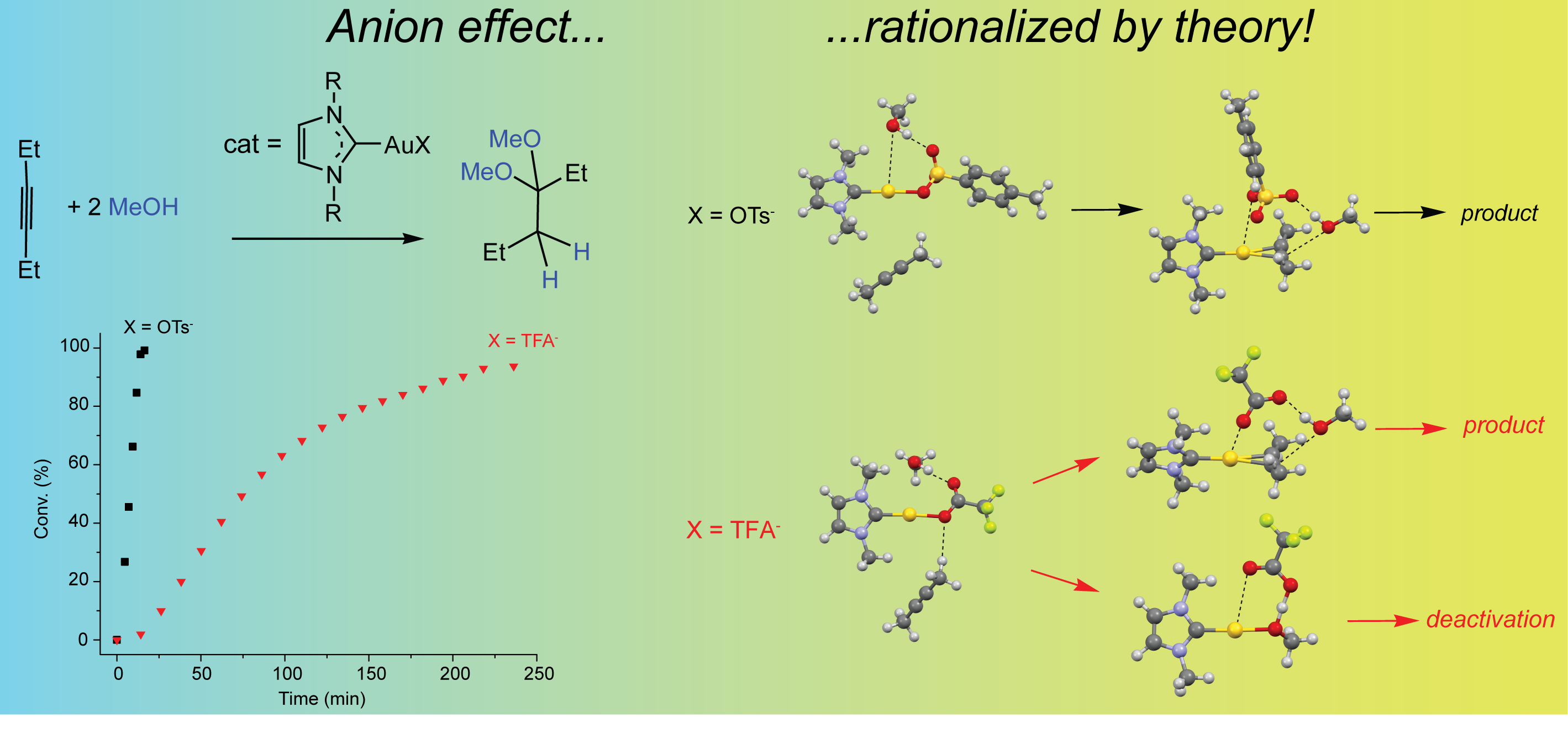Counterion effect in NHC-gold(I)-catalyzed alkoxylation
Homogeneous gold catalysis has reached an extraordinary level of popularity within organic synthesis as a fundamental tool in the nucleophilic reactions of isolated π-systems, C-H activation, cross-couplings, photocatalysis and enantioselective transformations. Together with the ligand effect, the nature of the gold-catalyst counterion has been recognized to be essential in tuning the catalytic performances (activity, regioselectivity and stereoselectivity). However, the role of the anion in the different steps of the catalytic cycle is still an open issue to debate.
Experimental data suggest that anions which can act as both coordinating ligand and hydrogen-bond acceptor unexpectedly increase the efficiency of L–Au–X (L = ligand, X = anion) catalyzed alkyne alkoxylation reactions, where the nucleophilic attack is the rate-determining step. DFT calculations show that in this step, the anion acts (i) as a template, holding the nucleophile in the right position for the outer-sphere attack; (ii) as a hydrogen-bond acceptor, enhancing the nucleophilicity of the attacking alcohol; (iii) as catalyst deactivator, by either its strong coordinating and/or basicity power, preventing the alkyne coordination or forming free alkoxide, respectively. In the protodeauration step, the anion acts as a proton shuttle, lowering the activation barrier. Based on this reaction mechanism, DFT calculations support intermediate coordinating and basicity power anions as the most efficient catalysts.

The tosylate counteranion strikes a perfect balance between its proficiency as a ligand to the Au-NHC complex and as a H-bond acceptor, improving catalytic efficiency for alkyne alkoxylation
Relativistic DFT, reaction mechanisms, homogeneous catalysis
G. Ciancaleoni, L. Belpassi, D. Zuccaccia, F. Tarantelli, and P. Belanzoni, Counterion Effect in the Reaction Mechanism of NHC Gold(I)-Catalyzed Alkoxylation of Alkynes: Computational Insight into Experiment, ACS Catal. 5, 803–814 (2015)
Key conceptsADF catalysis inorganic chemistry Reactivity Relativistic DFT